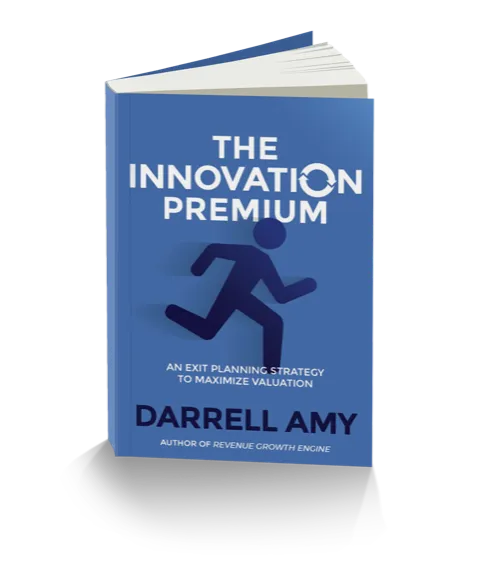THE VALUE CREATION BLOG

Should You Use the R-Word In Your Marketing and Sales Messages?
This morning my LinkedIn feed and email inbox was littered with sloppy marketing. Everywhere I turned I saw the R-word: recession.
“In today’s recessionary marketplace…”
“How will you handle the recession?”
“Recession-proof Your Business”
Three Problems With the R-Word
1. It’s Sloppy Assessment of the Situation
The R-word is anything but precise. Economists can’t even agree on the definition of the word recession. It used to be two quarters of negative GDP growth (that happened last year and is yesterday’s news). However, the people in power (who get to write history, and the news) decided that the old definition of recession was not helpful to their cause. This is hilarious and/or maddening, but not helpful to your ability to drive revenue.
The reality is more like a mixed bag.
From one perspective the glass is partially full. When you look at the data in yesterday’s WSJ you see things like:
2.9% inflation adjusted GDP in Q4 (not bad!)
High employment and a reduction in the employment cost index in the last half of 22
Inflation fell to an annualized rate of 2.9%
That data seems very hopeful.
The other perspective has the glass half empty with a massive leak. While you also see scary headlines in the mainstream media about massive job cuts in tech companies, the next page of the news talks about how small businesses are on a hiring spree.
When your marketing message implies that we are in a recession, to me that reveals a lack of understanding of the nuances of the economy. It signals to potential buyers that you may not really know what you are talking about.
Rather than talk about recession a more helpful approach is to find words that address the mixed bag of rapidly changing scenarios in today’s world. Meridith Elliott Powell nails this with the word “uncertainty.” (Check out her book, Thrive: How To Turn Uncertainty Into Competitive Advantage.)

2. Most Executives Don’t Want To Hear It
The most common thing I hear in executive peer groups when the R-word comes up is this: “I refuse to participate in a recession!” I love this can-do attitude.
(Full disclosure: I recently broke my R-word rule with an opportunistic headline for an article I submitted to the Forbes Business Council titled “Three Ways Small Businesses Can Refuse to Participate In the Recession.” I’ll add the link here when it gets published.)
Most executives want to hear about solutions to the specific problems. Instead of just throwing out the R-word talk about the specific obstacles and opportunities:
High interest rates increasing expenses and causing a reevaluation of growth and capital plans
Near-shoring supply chains to reduce risk
Recognizing opportunities and challenges during a military build up
Onboarding enterprise refugees into small and medium sized businesses
Navigating the changes in tax law
Add to this the specific trends going on in each industry you serve and you have the opportunity to be specific.
3. The R-Word Has Become Static Noise
Marketing and sales people like to throw around buzz words. We can help you:
Increase profitability
Enhance productivity
Improve morale
Enhance competitive advantage
Reduce risk
In Revenue Growth Engine I call these words “marketing mush”. In a world where the average person gets bombarded with over 3,000 marketing messages a day, these things simply get tuned out. It’s like the old days with the tuning dial on the car radio. It’s the static noise space in between radio stations.
I believe that the R-Word has become (or will very soon become) static noise. So, if you want to get attention, be careful how you use it.
A Better Alternative to the R-Word
What are some better alternatives to the R-word? I think Meridith Elliott Powell nails it with the word “uncertainty”. Look, we don’t really know what is going to happen. The last three years have been highly uncertain. Anything we can do to help buyers make sense of uncertainty and reduce their risk seems like a welcome message.
Uncertainty is a little more flexible. It allows you to address the concerns of buyers that really are concerned about the recession while not turning off the other buyers that don’t like the R-word.
The other great thing about uncertainty is that it addresses the one benefit that marketing and sales teams routinely overlook: risk.
Buyers want to find ways to reduce risk. Uncertainty is risk. When you help them deal with uncertainty you bring a big benefit into the equation.
Takeaways
As you think about alternatives to the R-word here are three important takeaways:
1. Focus On Outcomes
In Revenue Growth Engine I repeat this critical point: Buyers don’t buy products and services, they buy the outcomes the products and services enable.

What are the outcomes your clients want to achieve? Yes, they want increased profitability, improved productivity, and happy people.
Consider how you can add a fourth outcome to your mix: increased certainty. What can you do to help alleviate uncertainty for your prospects and clients? How can you reduce their risk?
2. Be Specific about the Obstacles
Every outcome a buyer wants has obstacles. These are the current issues that threaten the ability of a buyer to get the outcomes they want. Some common obstacles we face now are:
Rising interest rates increase the cost of money
Tight supply chains threaten the ability to deliver products on time
Zero or negative GDP growth in some foreign countries
Potential for war.
Sales and marketing messages need to apply some of these macro issues to address the specific obstacles buyers face in their industries and markets.
3. Include the Opportunities
When you look back over history you discover that many of the largest companies in existence today were born during economic recessions. If change creates opportunities, that means there are opportunities everywhere during this time of sea level change.
Make sure your sales and marketing message includes something about how your buyers can capitalize on opportunities in the market:
How Small Businesses Can Find Great Talent From Large Company Layoffs
Strategies to Leverage AI to Boost Productivity
Ways to Capitalize on the Near-Shoring Trend
As you modify your sales and marketing message (something you need to be continually doing in an uncertain market) avoid the temptation to get sloppy with the R-word. Make sure to stay in tune with what’s really going on.
Read the WSJ and industry news.
Pay attention to what your clients are saying.
Then, test the message out on some of your best clients.
This will give you the keys to creating an effective message that resonates, gets attention, and drives revenue. I believe this will be much more effective than throwing around the R-word.

Originally published on Darrell Amy's LinkedIn.
FREE BUSINESS VALUATION
What is Your Business Worth?
You can Discover the Value of Your Business in Less than 20 Minutes!
Join 70,000 business owners and get your score on the 8 Factors That Drive Your Company’s Value, a comprehensive analysis of your score and a detailed action plan for how to improve your score on each.


PREORDER YOUR FREE COPY NOW
Discover How to Create a Premium Valuation for Your Business
Learn how to command a premium multiple on your business
Find out why buyers discount their offers
See how innovation can help you create a premium valuation
Estimate your company's innovation index



